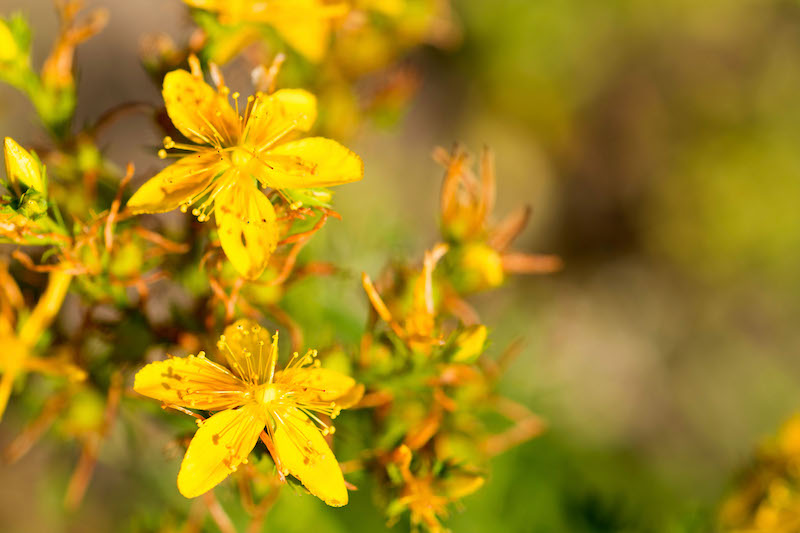St. John’s Wort is native to all continents except Antarctica and North America, where it has been naturalized since settlers brought it in 1696.4,8 The plant is hardy in US zones 3 to 7 and prefers a habitat of open forest, copses, grasslands, roadsides, meadows and borders.3,7,9 It grows in moist soil with no shade to semi-shaded woodlands, although it flowers best in the sun.3 This aromatic plant is pollinated by bees and flies, while attracting many insects.3,4
It is a common weed and is considered invasive due to its prolific self-seeding, which can yield up to 100,000 seeds per year and last in the soil for up to 10 years.3,8 As a noxious weed, it is prohibited from planting without a permit in California, Colorado, Montana, Nevada, Oregon, South Dakota, Washington, Wisconsin and Wyoming.3,8 A similar looking but different species is often used in landscaping. H. calycinum has larger features and is more of a creeping shrub.
Herbalists use the tops while in flower, which bloom from May to August.3,4 The herb is often harvested around the solstice and midsummer holiday, St. John’s Day on June 24, a day that is commemorated by the Freemans to celebrate John the Baptist.9 The seeds ripen in July to September.3
Hypericum perforatum is used in Native American herbalism by the Cherokee, Iroquois and Montagnais tribes.2 Other species are used in herbalism by the Menominee, Meskwaki, Paiute, Shoshoni, Natchez, Seminole, Choctaw, Alabama, Houma and Koasati tribes.2 The Miwok tribe uses it and other species in herbalism and for food.2
St. John’s Wort is one of the best-known herbs today; however, it fell out of favor in the 19th century.3 In olden times, it was mostly used externally in poultices and oil infusions.3
Dyes of brown, gold and yellow can be made from the leaves and flowers.3
When the plant is infused in in water, the extract is yellow.3 When infused in oil, it imparts a reddish-brown color from the extraction of the hypericin-containing oil glands in the flowers and leaves.3,6 In some people, contact with the fresh sap exuded from the oil glands on the skin can cause photosensitivity.3
A fun pastime for children, and also for species identification, is to hold the plant up to the sun to see the oil glands dotting the plant.9 These visible glands look to be perforations, and are the basis for the species name, perforatum.6 The genus name, Hypericum, is derived from the Greek hyper (above) and eikon (image, picture). The flowers were hung above pictures or windows, as it was thought that the obnoxious scent would ward off evil spirits to fly away.8,9 Nicholas Culpeper wrote that St. John’s Wort is planetarily under the dominion of the Sun and the celestial sign of Leo.7






























